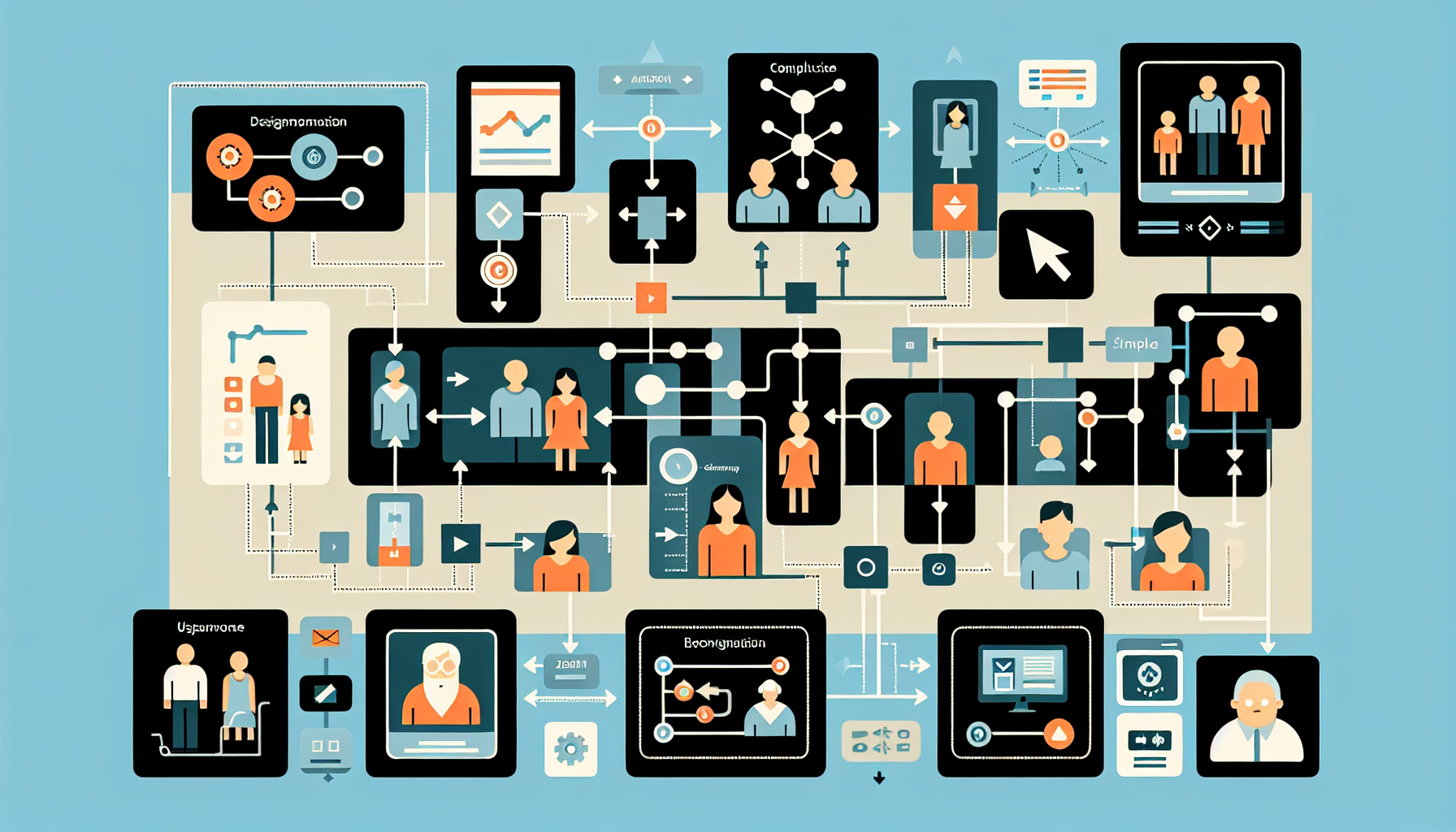Definition
The term “Appeals Modernization” refers to the updated and streamlined process for veterans to appeal decisions on their benefit claims made by the U.S. Department of Veterans Affairs (VA). Implemented under the Veterans Appeals Improvement and Modernization Act of 2017, this system aims to improve transparency, timeliness, and claimant choice during the appeals process. Veterans can now choose from three appeal options: Higher-Level Review, Supplemental Claim, or appeal directly to the Board of Veterans’ Appeals, providing greater flexibility in resolving their issues.
Key Takeaways
- Appeals Modernization refers to the Veterans Appeals Improvement and Modernization Act of 2017, which aims to simplify and streamline the appeals process for VA benefits claims, providing veterans with faster and more efficient resolution of their disputes.
- Under the modernized system, veterans now have three options for filing an appeal: Higher-Level Review, Supplemental Claim, and Appeal to the Board of Veterans’ Appeals, each featuring its own unique process and advantages, allowing veterans to choose the path that best fits their situation.
- The Appeals Modernization Act has been successful in reducing the backlog of pending appeals for VA benefits claims and ensuring timely decisions on veterans’ appeals, ultimately improving the accessibility and delivery of benefits and services to veterans.
Importance
The VA benefits term “Appeals Modernization” is important because it refers to a significant reform in the Department of Veterans Affairs (VA) appeals process for veterans’ benefits claims.
Instituted by the Veterans Appeals Improvement and Modernization Act of 2017, this modernization aims to streamline the appeals system, offering quicker and more efficient resolutions for veterans.
By providing three distinct review options for veterans dissatisfied with initial claims decisions, this new system offers greater choice, control, and transparency in the appeals process.
Overall, Appeals Modernization represents a crucial effort to improve the VA’s responsiveness to the needs of veterans and their families, ensuring they receive the accurate and timely benefits they deserve.
Explanation
Appeals Modernization is a crucial element of the overall reform efforts in the United States Department of Veterans Affairs (VA) system aimed at improving the delivery of benefits and services to veterans. The primary purpose of this initiative is to streamline the appeals process, making it more efficient and transparent, thereby ensuring that veterans receive the support they deserve in a timely manner. This comprehensive program concentrates on simplifying and speeding up the appeals process, eliminating the backlogs that have long plagued the VA system.
Ultimately, Appeals Modernization is designed to enhance the experience of veterans and their families as they navigate the complex web of VA benefits, making certain that they receive the consideration and clarity they have earned through their service. Implemented through the Veterans Appeals Improvement and Modernization Act of 2017, Appeals Modernization presents veterans with multiple options to address disagreements or unfavorable decisions concerning their claims for benefits. Under the new system, veterans can now choose from three primary lanes: Higher-Level Review, Supplemental Claim, and appeal to the Board of Veterans’ Appeals.
Each avenue offers distinctive benefits, empowering veterans to select the most suitable path based on their individual circumstances and desires for reconsideration. In essence, Appeals Modernization has transformed the once rigid and opaque process into a more adaptable and transparent one, enabling veterans to better understand the status of their appeals and the steps required to obtain a resolution. Overall, this groundbreaking reform reflects the VA’s commitment to upholding the rights of veterans and honoring their service by ensuring access to the benefits they rightfully deserve.
Examples of Appeals Modernization
The Appeals Modernization Act (AMA) was signed into law on August 23, 2017, and aimed to reform the Department of Veterans Affairs (VA) appeals process for disability claims. The new system took effect on February 19, 2019, and provides veterans with a more timely and efficient process when appealing decisions on their claims. Here are three real-world examples of how the AMA benefits veterans:
Streamlined Appeal Process: Under the previous appeals process, veterans could face lengthy wait times – as long as five years or more – for decisions on their appeals. With the implementation of the AMA, the VA introduced three new pathways for veterans to appeal decisions, significantly reducing the wait times. In several cases, veterans have reported receiving decisions on their appeals within just a few months, providing them with quicker access to their benefits.
Different Review Pathways: The AMA established three review options for veterans who wish to appeal their initial claims decision – Higher-Level Review, Supplemental Claim, and Notice of Disagreement (appeals to the Board of Veterans’ Appeals). These new pathways provide veterans with additional options to find the most appropriate path for their specific situation. For example, a veteran who believes there is a clear error in their decision may choose a Higher-Level Review, while another who has new evidence to submit in support of their claim may opt for the Supplemental Claim pathway.
Increased Transparency and Communication: Before the AMA’s implementation, veterans often faced challenges in understanding the status and progress of their appeals. The modernized system allows veterans to track the progress of their appeal through the VA’s website, offering greater transparency and communication throughout the process. Additionally, veterans receive a decision letter that explains the rationale for the decision, allowing them to address specific concerns in their appeal more effectively.In conclusion, the Appeals Modernization Act brings positive changes to the VA’s appeals process for disability claims. The new system offers a more efficient and transparent approach that allows veterans to receive decisions on their appeals more quickly, choose the review pathway that best suits their needs, and track the progress of their claim with greater ease.
FAQ Section for Appeals Modernization
1. What is the Appeals Modernization Act (AMA)?
The Appeals Modernization Act (AMA) is a law that was passed in 2017 to reform the VA appeals process, with the goal of providing veterans with a more efficient and timely resolution for their appeals. The AMA addresses various issues within the previous appeals system, including the elimination of lengthy backlogs and simplifying the appeals process for all involved parties.
2. How does the AMA process work?
The AMA process offers veterans three options to review and address their disagreement with VA decisions – Supplemental Claim, Higher-Level Review, and Appeal to the Board of Veterans’ Appeals. These paths allow for a more streamlined and efficient approach to resolving appeals, with each option tailored to address specific concerns and evidence.
3. How does the Supplemental Claim process work under AMA?
Under AMA, a Supplemental Claim is an option for veterans who believe there is additional evidence that could change the outcome of their case. Veterans can submit new and relevant evidence, and VA will conduct a new review, taking this new evidence into account.
4. What is a Higher-Level Review?
A Higher-Level Review is a path under AMA that allows veterans to request a re-evaluation of their claim by a more senior claims adjudicator. The adjudicator will review the claim de novo, meaning they will consider the evidence available without the influence of previous decisions.
5. How can veterans appeal to the Board of Veterans’ Appeals under AMA?
Veterans can appeal to the Board of Veterans’ Appeals by submitting a Notice of Disagreement (NOD). Under the AMA, veterans can choose from three dockets – direct review, evidence submission, or a hearing – that best suit their needs and concerns.
6. Can veterans change appeal paths under AMA?
Yes, veterans can switch the review option they initially chose under the AMA. However, they must wait for a final decision on their current review to address the claim (or up to one year after the initial VA decision) before choosing another path.
7. How does the AMA affect legacy appeals?
The AMA primarily affects new appeals filed after the Act’s implementation date of February 19, 2019. Legacy appeals filed before that date will continue to be processed under the previous appeals system. However, veterans with pending legacy appeals have the option to opt-in to the AMA process at specific junctures during their appeal.
Related VA Benefit Terms
- Supplemental Claims
- Higher-Level Review
- Board of Veterans’ Appeals
- Notice of Disagreement
- Decision Review Officer
Sources for More Information
- U.S. Department of Veterans Affairs
- Veterans Benefits Administration
- Vets.gov
- National Veterans Legal Services Program
 Benefits.com Advisors
Benefits.com Advisors
With expertise spanning local, state, and federal benefit programs, our team is dedicated to guiding individuals towards the perfect program tailored to their unique circumstances.
Rise to the top with Peak Benefits!
Join our Peak Benefits Newsletter for the latest news, resources, and offers on all things government benefits.





















